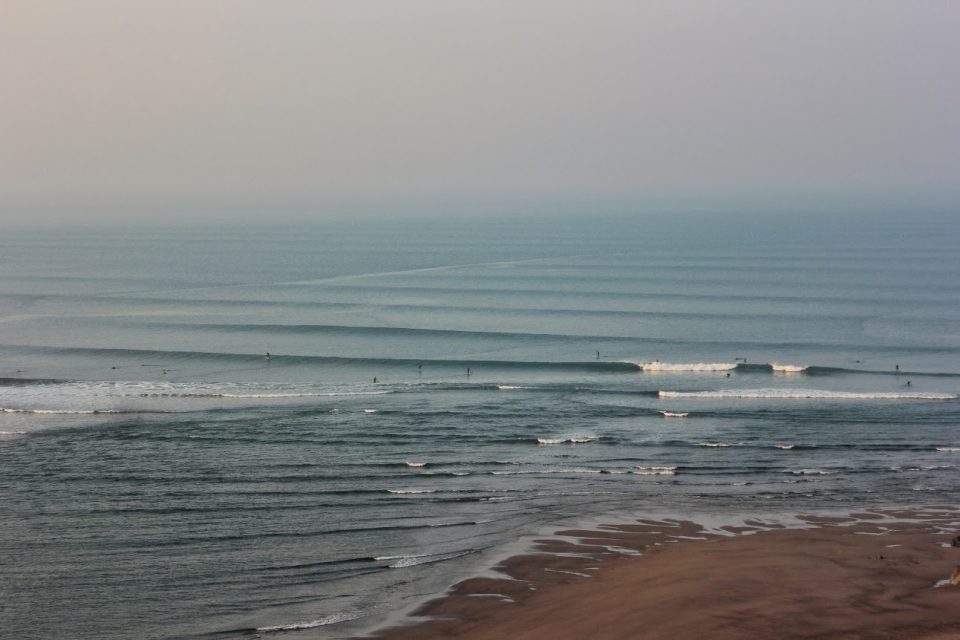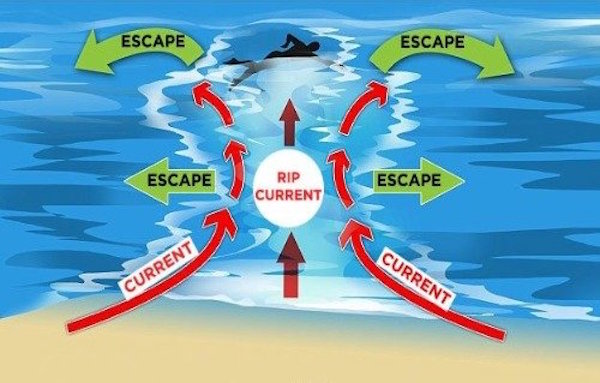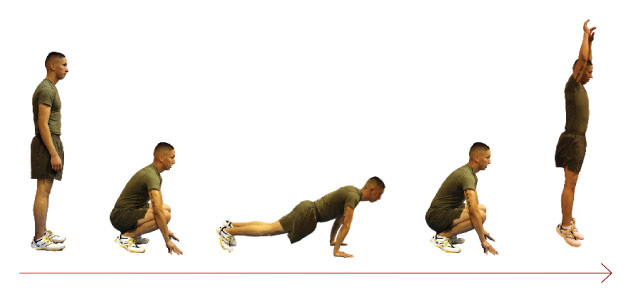When surfing you will inevitably encounter rip currents. When you become more advanced you can use them to your advantage to get you “out back” quicker, but as a beginner it can be a really scary situation if you don’t know what is going on or what to do to fix it. It has happened to us all, but by knowing just a few basic bits of information it’s not something you need to worry about.
Rips are strong currents running out to sea, which can quickly drag people away from the shallows and out to deeper water. They tend to flow at 1–2mph but can reach 4–5mph, rips are especially powerful in larger surf, but don’t underestimate the power of a rip in any size surf.
Rip currents can be difficult to spot, but are sometimes identified by a channel of churning, choppy water on the sea’s surface. Even the most experienced surfers can be caught out by rips, so don’t be afraid to ask lifeguards for advice. They will show you how you can identify and avoid rips on a specific beach. The best way to avoid rips as a beginner is to choose a lifeguarded beach and always surf between the black and white flags, which have been marked based on where it is safer to surf in the current conditions. This also helps you to be spotted more easily, should something go wrong.
If you do find yourself caught in a rip current the first thing is to not panic and then try and follow these points:
– Don’t try to swim against it or you’ll get exhausted.
– Use the breaking wave to help you get towards the shore, or out of the rip.
– If you can, paddle parallel to the shore until free of the rip and then head for shore.
– Don’t be afraid to raise your hand and shout for help. Most other surfers will be happy to help out.





